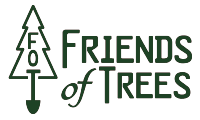Spanish chestnut
Castanea sativa
Full Retail Price: $195 (Why the difference?)
Characteristics:
A nicely formed tree with interesting bark.
Growing Conditions:
Prefers full sun. Does best in sandy, well-drained soil; once established is tolerant of drought. It is resistant to oak wilt fungus but susceptible to chestnut blight but less so than the American Chestnut (Castenea dentata).
Uses:
Height:
50' at maturity
Width:
50' at maturity
Shape:
Rounded
Flowers:
Long male catkins in July and small female flowers.
Leaves:
Green, coarsely toothed and glossy, heart-shaped at base
Bark:
Deeply fissured and spirals up the trunks
More Information:
From the OSU Landscape Plants website:
Oregon Heritage Tree: #6 Nyberg Chestnut (Castanea sativa)
John Nyberg, an immigrant from Sweden, was a farmer at the turn of the 20th Century. In 1903, he planted an orchard of more than 150 trees � which included several Castanea sativa [Sweet or European Chestnut] trees. But in 1954, when Interstate 5 was being built, the Nyberg home and orchard were located on the highway right-of-way and the home had to be moved and most of the orchard was destroyed. Reportedly John Nyberg had watched as most of the trees were pushed over but then decided to save the last one so he literally stood in front of the D-9 cat and stopped it from bulldozing down the last chestnut tree.
This Heritage Tree in the named the Nyberg Chestnut and is now about 65 feet tall and 70 feet wide. It is located at the Interstate 5 and Nyberg Road interchange (I 5 exit 289, southbound) in Tualatin, Oregon in Washington County.
